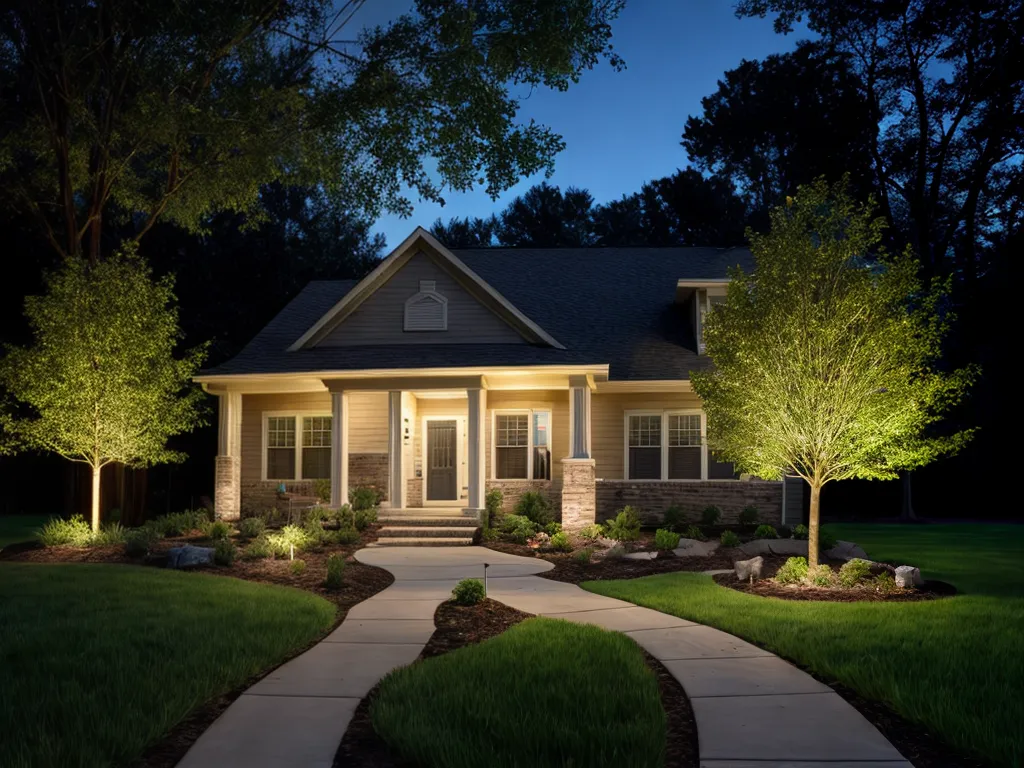
Introduction
Connecting low-voltage landscape lighting wires is a great way to enhance the beauty and security of your outdoor space. However, improper connections can lead to hazards like shorts, fires, and electrocution. By following some simple safety guidelines, I can install landscape lighting safely and enjoy it for years to come.
Safety Gear Needed
When working with any electrical project, it is essential to wear the proper safety gear. This protects me from shocks, burns, and eye injuries. The safety equipment I need includes:
-
Rubber-soled shoes - These insulate me from the ground in case of an accidental shock.
-
Safety goggles - Protect my eyes from debris and prevent eye injuries.
-
Gloves - Insulate my hands and prevent cuts from sharp wires.
-
Long pants and long sleeves - Prevent shocks and burns on my skin.
Choosing the Right Low-Voltage Lighting
The first step in safety is choosing lighting components designed for low-voltage systems. Low-voltage lights operate on 12V or 24V power, unlike the 120V power in your home's outlets. Some key advantages of low-voltage lighting are:
-
Much lower risk of dangerous electrical shocks.
-
Components are safe to handle even when energized.
-
Limited power minimizes fire hazards.
When purchasing low-voltage lighting, verify it is rated for outdoor use and your expected voltage. Commonly used systems are 12V or 24V.
Using Proper Connectors
One of the most important aspects of safe installation is using the right type of wire connectors. Proper connectors will ensure robust, long-lasting connections that do not short or spark.
-
For connecting wires to transformers, use solderless connectors rated for the appropriate wire gauge and voltage. Verify they are waterproof.
-
For joining wire segments, use gel-filled wire nuts suitable for direct burial. These resist water penetration.
-
For connecting wires to lights, use connectors integrated with the light housing or gel-filled connectors.
Avoid using household electrical tape, cheap plastic connectors, or bare wire twists as these can fail when buried.
Keeping Wires Organized
Neatly organized wiring makes a safer low-voltage lighting system for a few reasons:
-
It prevents wires shorting out against each other when they are buried.
-
It makes visual inspections easier to check that no insulation is damaged.
-
It reduces confusion when adding or changing the system.
Some tips for organized wiring are:
-
Clip wires securely to fixtures so connections are not strained.
-
Bundle wires together with zip ties as they run to each light fixture.
-
Leave a bit of slack near connections to allow for expansion and contraction.
-
Use wire clips or staples when routing wires against walls or the foundation.
Inspecting Wires and Connections
Before burying any landscape lighting system, it is crucial that I inspect the wires and connections. Here is what to check:
-
Wire insulation - Look along the full length to ensure the insulation is undamaged. Even small nicks can cause shorts when buried.
-
Connections - Gently tug wires at each connector to ensure they are securely fastened. Verify no bare wire is exposed.
-
Voltage - Test the voltages to confirm the expected value before burying wires.
-
Polarity - Use a polarity tester to confirm wires are connected properly throughout the system.
Taking these precautions ensures I can bury the landscape lighting system confident it is safe and wired correctly.
Using Proper Burial Techniques
Burying the landscape wires properly is just as important as the connections themselves. Follow these guidelines when burying:
-
Depth - For most systems, bury wires at least 6 inches deep to avoid damage from gardening tools. Routing next to foundations or under patios may require burial 12 inches or deeper.
-
Materials - Surround wires with sand or screened soil when burying. Avoid rocks, sticks, and pebbles that could damage insulation over time.
-
Marking - Use colored plastic tape above buried wires to mark their location for future reference. Note the burial depth.
Proper wire burial prevents accidental digging damage, protects from freeze/thaw shifts, and allows for safe modifications down the road.
Following Codes and Permits
Most jurisdictions require permits for outdoor lighting installations, even low-voltage systems. Be sure to check local municipal codes and secure any required permits before starting. Key guidelines include:
-
Maximum wattage limits per linear foot.
-
Mandatory use of electrical GFCI protection.
-
Limitations on lighting near property lines.
-
Minimum burial depth and conduit requirements.
Following all codes and permitting ensures my lighting project meets safety standards and avoids headaches down the road. Checking with local authorities is an important first step.
Conclusion
Installing low-voltage landscape lighting has some inherent risks when dealing with electricity. However, by using the right gear, components, and installation techniques, I can create beautiful and safe outdoor lighting. The most important aspects are: quality low-voltage equipment, proper connectors, neat wiring, safe burial, and checking local codes. Taking the time to do it right will let me enjoy the benefits of landscape lighting for years to come.